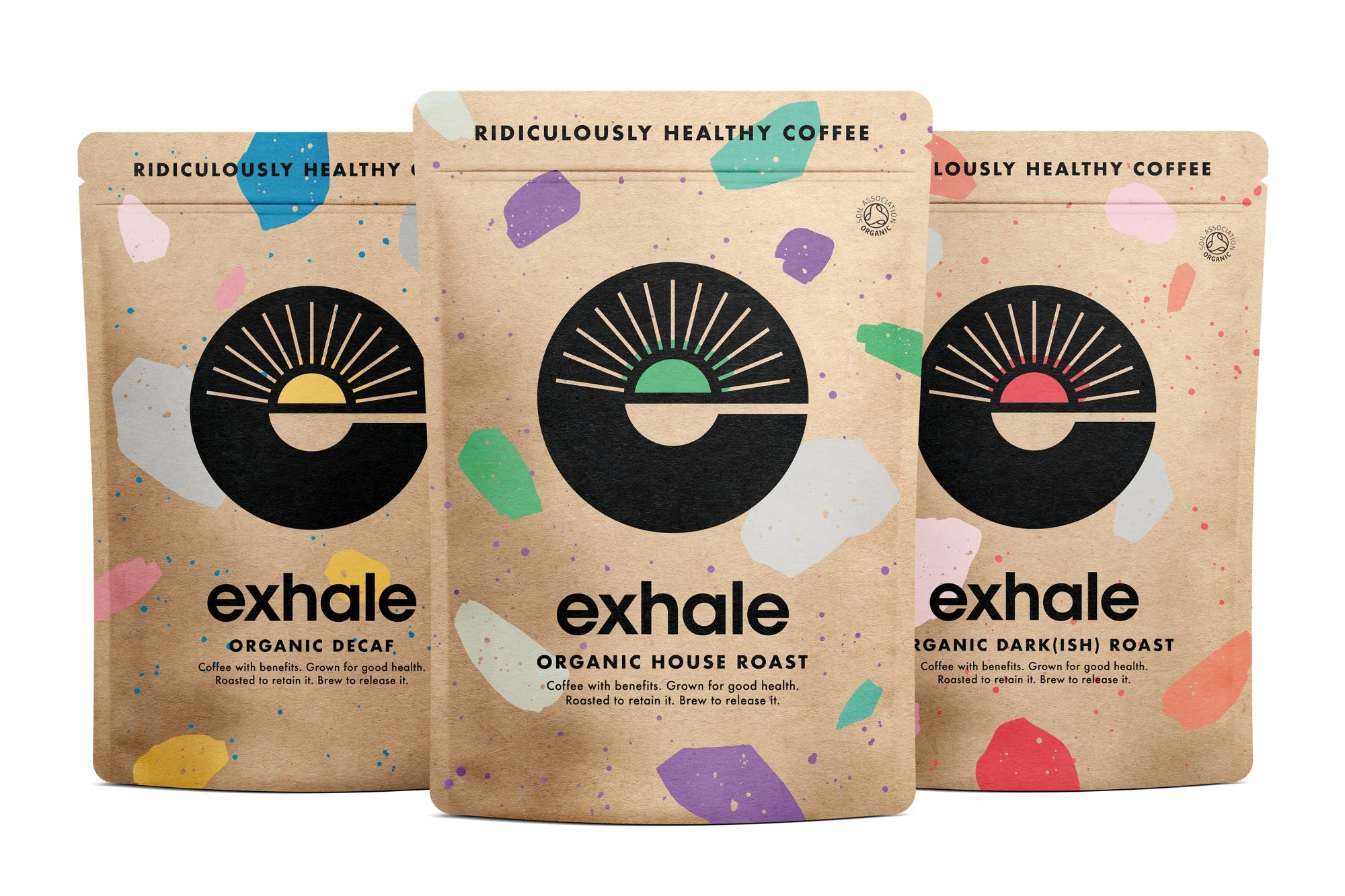Unveiling the Art of Coffee Fermentation: Transforming Beans into Liquid Gold.
Introduction:
During the last decade there has been an exponential rise in the popularity of fermented foods. Drinks like kombucha and kefir are touted as the elixir of life and are now offered in both hipster and mainstream joints across the UK.
But just as coffee is arguably the world’s most consumed, but overlooked, herbal medicine, you may be surprised to learn that it’s also the world’s most consumed fermented food too! It’s just never spoken of as such.
Admittedly, the microbes involved in coffee fermentation are mostly burnt off during roasting and brewing so you don’t actually consume them like you do with drinks like kombucha. However, they play many crucial roles in the life of the humble coffee bean in order to turn it into the delicious brew we all know and love.

In this article I explore the nuances of coffee fermentation, its impact on flavour development and coffee’s bioactive compounds, and the various methods employed by coffee producers.
The life cycle of Coffee: Harvest, Fermentation, Drying, Roasting, Brewing
Before we dive into the depths of coffee fermentation, let's briefly touch upon the journey coffee undergoes. The life cycle of coffee can be divided into five main stages: harvest, fermentation, drying, roasting, and brewing. Each stage is vitally important and contributes to the complex flavours and characteristics we associate with our favourite cup of coffee. The fermentation process is no exception, so much of the magic happens here and that’s the stage of the process I’ll focus on today.

Methods of Removing Coffee Beans from the Fruit: Dry, Wet, and Semi-Dry Processes
Once the ripe coffee cherries are harvested, they go through a series of processes to transform into green coffee beans. Prompt processing is essential to prevent spoilage or unwanted mould growth. There are three primary methods used to remove coffee beans from the fruit: the dry process, the wet process, and the semi-dry process.
Dry Process:
In the dry process, coffee cherries are picked then quickly spread out in the sun on elevated drying beds for 2-4 weeks. Regular agitation reduces the risk of mould growth, although unwanted microbes can still pose a contamination risk. The cherries are dried until their water content reaches around 11-12%, which is necessary for export. The slower fermentation occurring during the dry process involves a higher number of microbes.

Wet Process:
The wet process is the main process used for arabica beans in Central and South America. It involves mechanical depulping (squishing) of the cherries to remove a significant portion of the fruit flesh. The remaining pulp still attached to the beans is then degraded during fermentation in water tanks for 6-48 hours. The sticky green beans are then washed and dried for up to another 1 to 2 weeks, until they reach the desired moisture content.
Dry (often called Natural) processed and wet (often called Washed) processed beans have very distinctly different flavour profiles. You can spot the difference a mile off and it’s thought that this is primarily caused because the wet process allows early germination of the coffee beans (seeds). Germination leads to the production of amino acids that serve as flavour precursors, resulting in coffee with enhanced acidity and distinct flavours.

Semi-Dry Process:
The semi-dry process, also known as the honey process, combines elements of both the dry and wet processes. Coffee fruit is mechanically depulped and then left out to dry, without undergoing fermentation in a tank. This method provides a balance between the flavour development of the dry process and the enhanced acidity of the wet process.
Microbes and Flavour Development During Fermentation
The fermentation stage of coffee processing plays a vital role in flavour development. Microbes present during fermentation release metabolites that permeate the beans and alter the structure of proteins and carbohydrates. These metabolites contribute to the diverse array of flavours that later develop during roasting.
There have been plenty of studies focused on the role microbes have in the degradation of mucilage (i.e. eating away the fruit/pulp from the beans inside) during fermentation. But newer, albeit sparser, research has linked microbes, especially yeasts, to a number of other actions during fermentation too including:
- Pulp and mucilage degradation
- Producing flavours like floral, fruity and sweet
- Inhibiting ochratoxigenic fungi growth (i.e. they stop the growth of the bad fungi!)
- Producing mycotoxins and off flavour.
- Produce several flavour metabolites such as organic acids (eg malic acid, citric acid, lactic acid etc), aldehydes, ketones esters and alcohol.

The Influence of Starter Cultures on Flavour
In recent years, the use of starter cultures during fermentation has gained attention. These cultures, consisting of selected yeasts or lactic acid bacteria (LAB), have shown the potential to impact taste profiles and some have been linked to producing some very specific flavours!
- Sensory analyses have revealed that specific strains of yeast, such as YC5.2, contribute to high-quality coffees with distinctive flavours like vanilla and floral scents.
- LAB strains, such as Lactobacillus plantarum and Lactobacillus rhamnosus, have been associated with the production of coffee beverages featuring high acidity, fruity notes, or even caramel and burnt characteristics.

This can be good news for coffee farmers because the careful selection of microbial starters can enhance flavour complexity and contribute to a more standardised flavour profile meaning they can command higher prices for their crop.
The Art of Consistency: Back Slopping and Standardized Flavour Profiles
In the pursuit of consistency, some coffee producers use a technique called "back slopping."
A coffee plantation is cropped over multiple days or weeks and so fermentation is a continual process. Coffer cherries from one days harvest are fermented then removed from the tanks after a day or two to be replaced by another batch of cherries. This goes on until the whole farm has been harvested and all cherries have been fermented.

Back-slopping involves using some of the bacteria and yeast rich water from the last batch fermented effectively as a starter culture for the next batch.
This process has two main benefits:
- Achieve a more standardised flavour profile. It is a form of ‘wild fermentation’ meaning that the strains of bacteria and yeast that are naturally in the environment will change from day to day. Using a starter culture from the previous batch will standardise the microbes in the fermentation tank and so the flavours they produce from batch to batch… to an extent.
- It reduces the fermentation time by giving the microbial colonies in the fermentation water a head start. This makes the whole process more efficient and economical for the farmer.
Regional Microbial Diversity and Local Flavours
Microbial diversity during coffee fermentation varies across different geographic regions, contributing to the unique flavours and aromas associated with specific coffee-growing areas. Each location possesses its microbial ecosystem, resulting in distinct coffee profiles. Research in this area is still in it’s infancy as it’s understandably very difficult to remove confounding variables from any studies, but it’s a really exciting one to follow (at least for LAB geeks like me!).

Temperature and Time
Temperature and time play crucial roles in coffee fermentation. Overfermentation can lead to the growth of spoilage bacteria, degrading the fragrance and flavour of the coffee. Researchers have found that shortening the fermentation time and controlling the temperature can result in higher quality coffee with elevated levels of esters and ketones. Finding the ideal balance is essential to achieving the desired flavours and aromas.
A note on Exhale coffee
While researching for this article I spoke to the Colombian farm where we buy our coffee from to understand how they do it. They came back with some fascinating insights I haven’t read elsewhere.
They said they have tested the microbial diversity of the soil their coffee plants grow in and when they compared it to the microbes involved in the fermentation tank they found the same ones. Which makes sense since it’s a wild fermentation.

However, what is interesting is that they’re an organic farm, producing coffee’s scoring 86/100 on the SCA scale (which are seriously high quality). The use of nasty chemical pesticides kills off much of the diversity of the microbes in soil. It’s a big problem in non-organic farms – pesticides kill pests, but also kill microbes resulting in microbially devoid soil which lead to weak plants, less resistant to pests. Well, it seems a microbially diverse soil also contributes to a microbially diverse fermentation process and as we discussed earlier, microbes as vitally important for many reasons during fermentation.
So another reason to support the use of organic farming practices – because organic farming leads to more microbially diverse soil… which leads to a more microbially diverse fermentation process… which potentially leads to a better tasting cup of coffee… hence their 86/100 scores! I say potentially because it’s not been elucidated in a study yet, but it makes complete sense.

Which fermentation method leads to the healthiest coffee?
The million-dollar question for a healthy coffee consumer! But unfortunately there have been relatively few studies looking at this. It’s something else that’s difficult to standardise for in studies. But there are a few general principles which we have followed since day one based on the limited available science:
- Semi-dry (aka Honey process) seems to have the least polyphenols of all in the research, perhaps due to the least amount of time fermenting.
- Natural processed coffees are left in the sun to dry for much longer and the UV rays from the sun provide an abiotic stress on the coffee causing a degradation of their polyphenols – i.e. UV rays reduce their level of polyphenols.
- Natural processed coffees are left out on drying beds for longer so their fermentation is less controlled and they have a higher chance of being colonised by nasty fungi which produce mycotoxins.
- We go for wet processed (washed) coffees which seem to have the lest risk of contamination and spend the least time under the sun’s UV rays.
Incidentally our current Colombian farm said they take extra care during the fermentation process, replacing the water more often, to give a gentler fermentation of the beans. This lessens the stress the coffee is under (both biotic and abiotic) and so maintains a higher level of polyphenols and so antioxidants in the coffee. Which fortunately for you was confirmed in our lab testing!

But aren’t bacteria and yest bad and given all of the above how can your coffee be mould, yeast and mycotoxin free?!
I imagine we’ll get asked this question and it’s a fair one! We do indeed test our coffee, independently, to be free from mould, yeast and mycotoxins.
To understand this you have to remember that not all mould and yeast produce mycotoxins. Only the bad ones! Speciality grade, organic farms will have impeccably high standards to maximise their coffees flavour so they can earn more from it. In doing so they will most likely be super-efficient at everything including fermentation. It’s only poorly managed fermentation processes which will lead to contamination from the ‘bad’ microbes producing the mycotoxins.
We test all green bean samples we receive. Only those with the lowest levels of microbes (bad or good even) are accepted. Then during the roasting process any tiny amount is burnt off which we then confirm by lab testing our roasted beans too.

Conclusion:
Coffee fermentation is a vitally important stage in the journey from coffee cherries to the cup of coffee we enjoy each day. It’s also a fun topic to learn about and it’s had me down many a research rabbit hole this last week! Whether through the dry, wet, or semi-dry process, the microbes involved in fermentation have a huge impact on the final flavours and aromas of brewed coffee.
It feels a little like we’re standing on the edge of a scientific precipice in that this is an area we’re learning more and more about each day. As recently as in April 2023, there was a study published testing the microbes in a particular Colombian coffee (not ours!) – they found 46 different strains of yeast in the fermentation tank, some of which had never been identified before! It’s mind blowing.
I’m excited to see where it all leads, but most of all I’m excited to see what else we can discover ourselves by working more closely with our new friends over in Colombia.
Al x

https://doi.org/10.1016/j.fbio.2023.102415
https://doi.org/10.3390%2Ffoods10112827
https://doi.org/10.1016/j.foodres.2019.108773
https://doi.org/10.1080/10408398.2015.1067759
https://doi.org/10.1016/j.foodres.2023.112793
https://doi.org/10.1016/j.foodchem.2023.135489





1 comment
Mark Ravenscroft
Hello, just wondered if you have come across any research about feeling sleepy AFTER drinking coffee!
Kind regards
Mark
Leave a comment
All comments are moderated before being published.
This site is protected by hCaptcha and the hCaptcha Privacy Policy and Terms of Service apply.